Have you ever felt lost when trying to figure out your makeup routine? Do you struggle with choosing the right makeup products for your skin type or finding your natural skin color or tone shade? It’s frustrating when your makeup doesn’t look as flawless as you want.
For beginners, makeup can seem overwhelming with so many products and techniques. It’s hard to know where to start, especially when dealing with things like oily or dry skin.
Don’t worry; we’re here to help! In this guide, we’ll provide easy-to-follow makeup tips for beginners. We’ll explain the makeup products you should have, every day tips and makeup routine to follow. We’ll also explore the common makeup mistakes and how to avoid them.
By the end, you’ll have the confidence to apply makeup and enhance your natural beauty with ease. Let’s get started on your makeup journey!
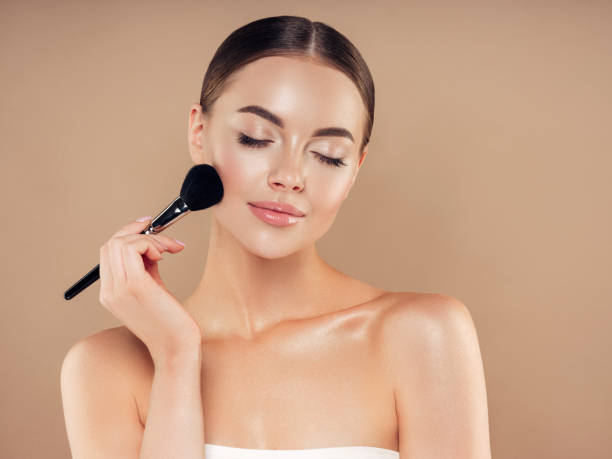
Article Contents
Simple Makeup Products to Have as A Beginner
Before we go into the makeup tips, there’s need to know some of the important products you should have in your makeup box. They include, but are not limited to the following:

Tinted Moisturizer
Think of tinted moisturizer as a combination of two things: a light foundation and a moisturizer. It gives your skin a bit of color while keeping it hydrated. It’s like giving your face a gentle boost without covering it up too much.
Makeup Primer
This is like a smooth canvas before you start painting. Makeup primer makes your skin super soft and helps your makeup stay in place. It’s like the glue that holds your makeup together.
Foundation Brush
This is a tool that helps you put on your base makeup (that’s the first layer of makeup). It spreads the makeup evenly and makes your skin look flawless.

Concealer Brush
If you have any little imperfections like pimples or dark circles under your eyes, concealer is like a superhero. This brush helps you apply and cover it up perfectly.
Makeup Sponge
This is like a soft, bouncy friend that helps you blend your makeup. It’s great for your foundation and concealer, making your skin look natural and smooth.
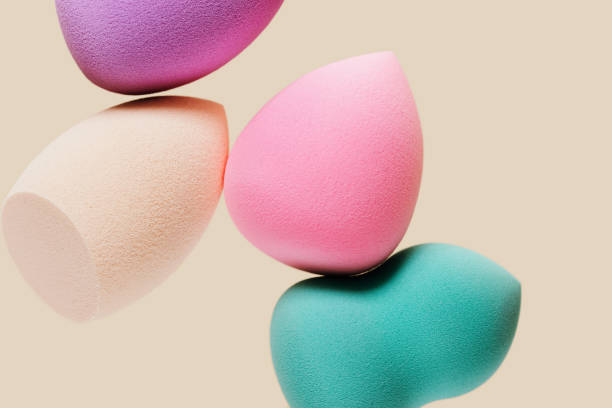
Powder Blush
Picture this as a little box of color for your cheeks. It makes you look rosy and fresh. Just remember, don’t use a shade too dark.
Eyeshadow Palette
This is like a magical book of colors for your eyelids. You can use these colors to create different eye makeup looks, and most palettes come with instructions, just like a recipe book.
Mascara Wand
It makes your eyelashes look longer and more beautiful. Don’t forget to use an eyelash curler before mascara for that extra oomph!

Lip Products
Lip balm is like a superhero for dry lips; it saves them from feeling chapped. Lip gloss adds a shiny finish, and lip liners help you color inside the lines of your lips.
Setting Spray
This first acts as a shield for your makeup. After you’re done, spray a bit on your face to make sure your makeup stays fresh all day.
Eye liner
Eye liner helps define your eyes. You can choose between pencil, gel, or liquid eyeliner for different effects. For beginners, a pencil eyeliner is a good starting point as it’s easier to control.
Eyebrow Pencil
Eyebrows frame your face. An eyebrow pencil helps fill in any gaps and shape your brows.
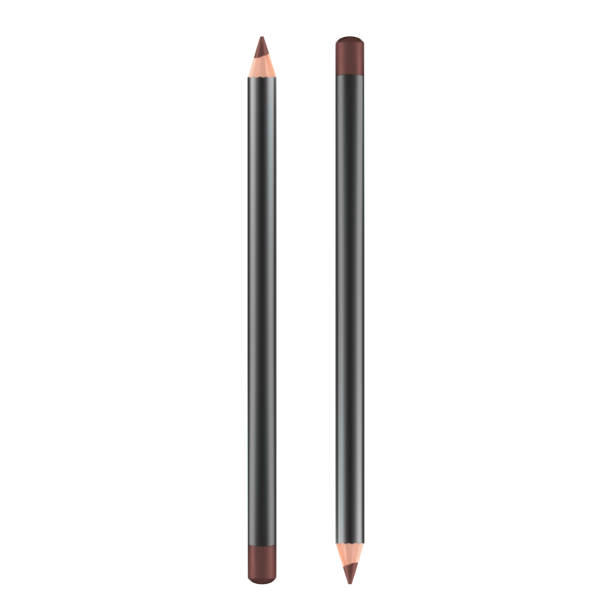
Lip stick
Lip stick adds color to your lips. You can choose from a wide range of shades to match your mood and style.
Compact Powder
This is a more portable version of loose powder. It’s great for touch-ups throughout the day.
Beauty Products
These include items like highlighter, bronzer, and contour products. They are meant to enhance your facial features and give your face more dimension.
Translucent Powder
Translucent powder is like invisible magic. It sets your makeup without adding extra color, making it perfect for all skin tones.
Essential Makeup Tips For Beginners
We’ve explored some of the products you need to start your makeup journey. Now, let’s delve into the makeup tips that can help you stay confident as a beginner:
Know Your Natural Skin Tone
One of the first makeup tips is to determine your natural skin tone. Your skin tone acts as the canvas for your makeup, and choosing the right foundation shade is crucial. You need to start by identifying whether your skin tone is light, fair, medium, or deep.
Once you have a general idea, you can further narrow it down to cool, warm, or neutral undertones. This will help you to select the right foundation and other makeup products that complements your natural complexion.
Understand Your Skin Type
Another important consideration is your skin type. Skin type ranges from oily, sensitive, combination, normal or dry skin. Individual makeup routines vary depending on their skin type.
If you have oily skin, it’s essential to use a makeup primer specifically designed for oil control. For dry skin, opt for a hydrating primer to create a smooth canvas. Individuals with sensitive skin should look for makeup products that are hypoallergenic and gentle on the skin.
Prepare Your Skin for Makeup
Before you dive into applying makeup on your face, it’s crucial to prepare your skin. This step is often overlooked but is a game-changer when it comes to achieving a flawless finish. Here’s how to do it:
Cleansing
Prior to starting your makeup, you have to remove impurities from your skin. Use a gentle cleanser for your face. Gently rub the soapy stuff all over your face and then rinse it off with water. After rinsing, you pat your face dry with a towel.
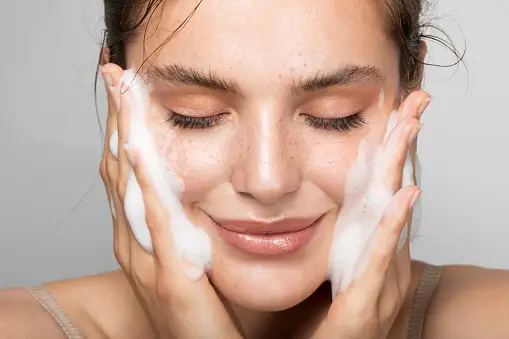
Moisturizing
After cleansing your face, it’s time to moisturize. Moisturizing is like giving your skin a drink of water. It keeps your skin soft and happy. You should find a moisturizer that matches your skin – if it feels dry, get a creamy one, and if it’s oily, pick a lightweight, oil-free one. Take a little bit of moisturizer and gently rub it all over your face and neck.
Moisturizing makes your skin feel nice and helps your makeup go on smoothly, like coloring on a smooth piece of paper.
Primer Application
I’m sure you don’t want your makeup to wash off quickly and smear. Primer is like the magic portion for your makeup routine. It creates a smooth base, helps your makeup last longer, and minimizes the appearance of pores. If your skin is oily, you should go for a primer that says “matte”. If it’s dry, go for one that says “hydrating.”
Just like lotion, apply a little bit of primer all over your face. It’s like putting on a special base before you start your painting.
Choose the Right Foundation
When you’re embarking on your makeup journey, one of the most fundamental steps is selecting the right shades of foundation and concealer to match your skin tone. Your choice of foundation can make or break your makeup game.
Foundation comes in various formulas, such as liquid, powder, cream, and tinted moisturizer. For beginners, a liquid foundation is often the easiest to work with as it provides sheer coverage and is more forgiving in terms of application.
For those with oily skin, consider opting for a matte foundation. This helps control excess shine throughout the day, providing a smooth and oil-free appearance. Conversely, if you have dry or sensitive skin, you might prefer a hydrating primer to create a smooth and moisturized base.
How to Choose the Right Foundation Shade
To find the perfect foundation shade, swatch a few different options on your jawline or inner wrist. The ideal shade should seamlessly blend with your skin tone. If your face and neck aren’t the same shade, choose a shade lighter for your neck to ensure a harmonious look.
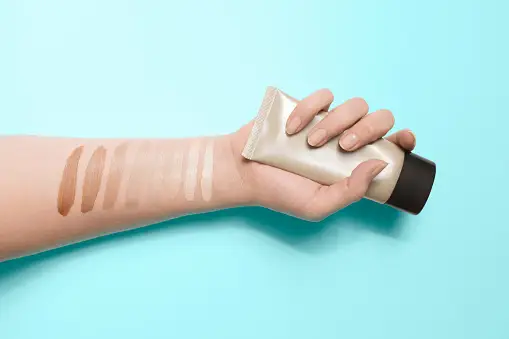
After you’ve chosen the perfect foundation shade, you then apply your foundation on your face.
The two common tools for applying foundation are makeup sponges and foundation brushes. Both have their merits, and it often comes down to personal preference.
A makeup sponge, when dampened, can give you a sheer coverage and a dewy finish. It’s perfect for those looking for a more natural, no-makeup makeup look. Gently bounce the sponge over your skin to apply the foundation evenly.
On the other hand, a foundation brush provides a bit more control. It allows you to build coverage gradually and blend precisely. Starting in the center of your face and working your way outward, use a foundation brush to create a smooth and even canvas.
Blend it down to your neck to ensure a seamless transition between your face and neck.
Apply Concealer
You should apply concealer after foundation. Concealer is your secret weapon for covering up imperfections such as dark circles, acne and blemishes. However, when it comes to concealer, you should go for a shade lighter than your foundation. This lighter shade helps brighten up the under-eye area, making you look more awake and fresh.
Applying a concealer that’s a shade lighter than your foundation in a few dots over the problem areas is the way to go. You can use a concealer brush for precise application or your fingertips if you prefer. Blend it gently into your skin for a seamless finish. This technique can give you a radiant and flawless look.
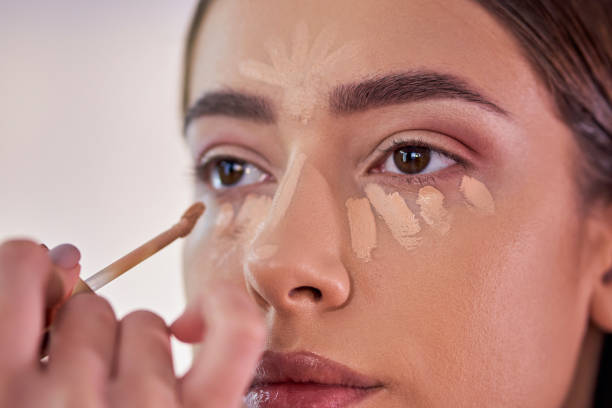
To prevent your makeup from sliding off, use a translucent powder to set your foundation and concealer. A fluffy brush is excellent for a light dusting of powder to lock your makeup in place.
You can also use a setting spray to help it last longer. This is especially helpful for everyday makeup that needs to stay put.
Eyeshadow Application
Eye shadow application is a fundamental aspect of makeup that allows you to enhance and define your eyes.
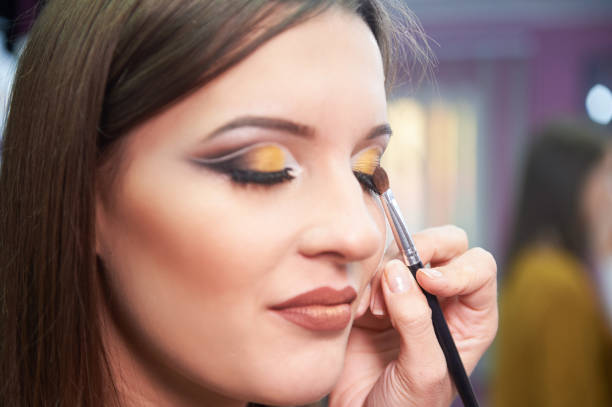
Choosing the Right Eyeshadow Colors
Before delving into the application process, it’s important to consider the eyeshadow colors that will complement your tone and personal style.
The tone of each individual is important in determining the color to use. If you have warm undertones, shades like earthy browns, coppers, golds, and warm neutrals can beautifully enhance your eyes. Individuals with cool undertones can opt for colors like blues, purples, silvers, and cool-toned grays.
Step-by-Step Eyeshadow Application:
- Prepare Your Eyelids: Start with a clean and well-moisturized eyelid. Apply an eyeshadow primer to create a smooth canvas, prevent creasing, and make your eyeshadow colors pop.
- Base Shade: Begin by applying a neutral or matte shade close to your skin tone all over your eyelid. This base shade provides an even surface for further eyeshadow application.
- Crease Color: To add depth and dimension to your eyes, choose a slightly darker shade than your base color. Using a crease brush, you should apply this color to the crease of your eyelid, working in a windshield wiper motion. Blend thoroughly to ensure a seamless transition between colors.
- Lid Shade: Apply your main eyeshadow color on the movable part of your eyelid, keeping the color within the eyelid space. You can use a flat eyeshadow brush or your fingertip for this step. If you want a more intense color payoff, you can wet your brush before application.
- Outer Corner Definition: For added drama, you can use a darker shade in the outer corner of your eyelid. This creates a gradient effect and emphasizes the outer part of your eyes.
- Highlight the Brow Bone: Apply a light, shimmery shade just below your eyebrow’s arch. This highlights your brow bone and adds a touch of shimmer to your look.
- Inner Corner Highlight: To brighten up your eyes, apply a small amount of a light, shimmering shade to the inner corner of your eye. This technique opens up your eyes and adds a hint of sparkle.
Blending and Seamless Transitions
One of the key elements of eyeshadow application is blending. Blending ensures that there are no harsh lines or visible demarcations between different eyeshadow colors. Use a clean blending brush to blend the colors in your crease and on your eyelid. Circular motions and back-and-forth blending strokes work well to create a seamless transition.
Eyeliner Techniques
Eyeliner is a versatile tool for defining your eyes and enhancing their shape. There are various eyeliner styles and techniques to choose from, depending on the look you want to achieve. Here are some popular eyeliner techniques:
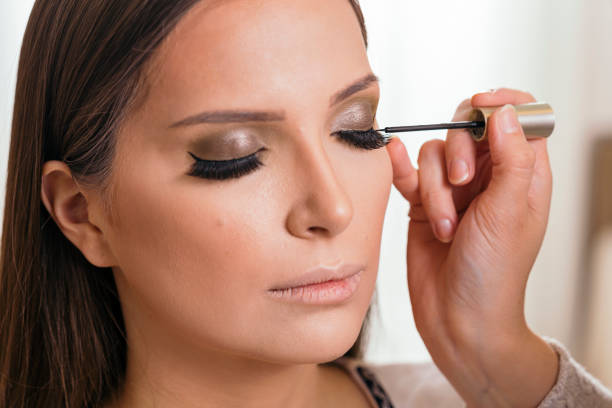
- Classic Eyeliner: To achieve a classic eyeliner look, start by drawing a thin line along your upper lash line. Begin from the inner corner and gradually thicken the line as you move toward the outer corner. This technique defines your eyes without creating a dramatic effect.
- Winged Eyeliner (Cat Eye): The winged eyeliner style is known for its elongated, cat-eye effect. Start by drawing a thin line along your upper lash line, extending it slightly past the outer corner of your eye. Then, create a diagonal line from the outer corner upwards to meet the first line, forming a wing. You can adjust the wing’s length and angle to your preference.
- Tightlining: Tightlining involves applying eyeliner to the upper waterline, which is the area between your lashes. This technique adds subtle definition to your eyes without creating a visible line. It’s particularly useful for a no-makeup or natural look.
- Lower Lash Line: To further define your eyes, you can apply eyeliner to your lower lash line. Use a pencil or brush to apply the liner, and consider using a smudging tool to soften the line for a smoky effect.
- Waterline Eyeliner: Applying eyeliner to your waterline (the inner rim of your lower eyelid) can make your eyes appear larger and more defined. Use a waterproof eyeliner for this area to prevent smudging.
Tips for Eyeliner Application
- Use a high-quality eyeliner pencil, gel, or liquid liner for precise application.
- Steady your hand by resting your elbow on a table when applying eyeliner.
- If you’re new to applying eyeliner, practice with small, controlled strokes, and gradually build up the line’s thickness and length.
Lip Makeup Tips
Your lips can transform your look, boost your confidence, and enhance your natural features. You’ll look more beautiful when you apply your lipstick in the right way.
Prep and Pamper Your Lips
Before diving into the world of lip makeup, it’s crucial to ensure your lips are well-prepped and cared for. Here’s how to start:
Exfoliation: Begin by exfoliating your lips to remove any dead skin. You can use a lip scrub, a toothbrush, or a homemade sugar scrub. Gently massage your lips in a circular motion, then rinse and pat dry.
Hydration: Keep your lips moisturized by applying a nourishing lip balm regularly. Well-moisturized lips provide a smooth canvas for lipstick application.
Primer: Consider using a lip primer before applying lip makeup. This not only helps the color adhere better but also prevents feathering and fading.
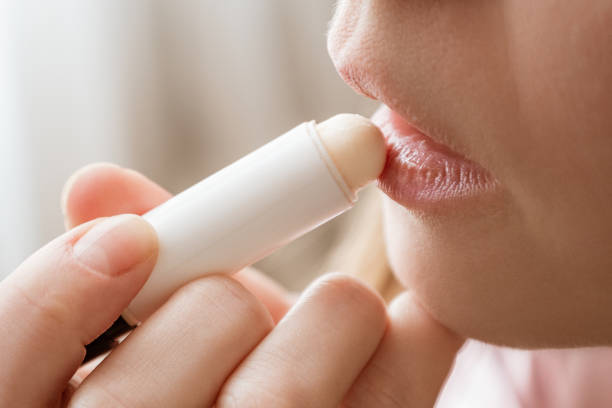
Choose the Right Lip Products
Selecting the right lip products is key to achieving your desired lip makeup look. Here are some considerations:
Lipstick: Lipsticks come in various finishes, including matte, satin, and glossy. Matte lipsticks offer a long-lasting, bold look, while satin lipsticks provide a more comfortable, creamy finish. Glossy lipsticks give you that shiny, vibrant appearance.
Lip Liners: Lip liners help define your lips, prevent lipstick from feathering, and enhance the longevity of your lip color. Choose a liner that matches your lipstick shade or is slightly darker for added dimension.
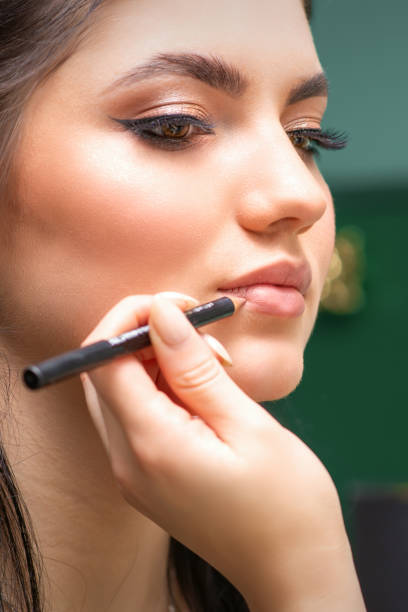
Lip Gloss: Lip gloss adds shine and dimension to your lips. It’s a versatile product that can be worn alone or over lipstick for a glossy finish.
Lip Stains: Lip stains provide a lightweight, natural-looking tint. They’re a great choice for a subtle, everyday look.
Apply your Makeup in Natural Light
Natural light is a hidden gem in the world of makeup. It plays a crucial role in ensuring that your makeup looks flawless and that your efforts are well-rewarded, especially for beginners. Applying makeup in natural light allows you to achieve a flawless application. You can see the texture of your skin, any blemishes, and areas that need more coverage. This means that when you use a foundation brush, a sponge, or any other tool, you can be more precise and attentive to the details of your makeup.
Practice Makes Perfect
Like any skill, practice is key to improving your makeup game. As a beginner, don’t be afraid to try different makeup styles in your free time. This is the only way you can get better. You might not get it right the first time, and that’s okay. Mistakes are valuable lessons. They help you understand what works and what doesn’t.
With practice, you’ll become more confident in your makeup skills and over time, you’ll find it easier to create your desired look.
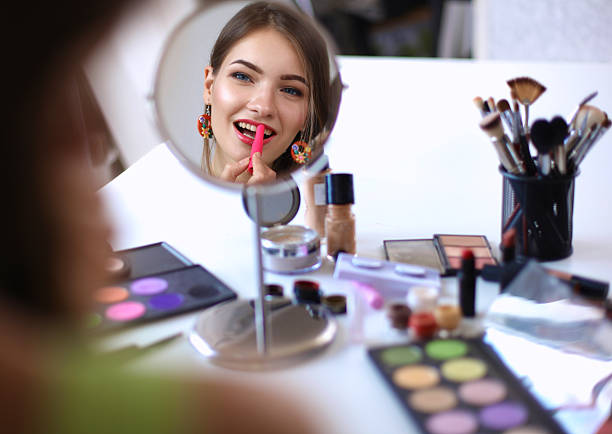
Take Your Time
Rushing through your makeup applications can lead to errors and frustration. Makeup requires proper attention to detail. Taking your time allows you to be precise in your application, resulting in a more polished finish.
When you rush your makeup, it can lead to smudged eyeliner or uneven foundation. By being patient, you reduce the chances of making these mistakes.
Makeup should be an enjoyable experience. Taking your time lets you savor the process and have fun with it.
Clean Your Tools
Clean makeup tools are essential for good hygiene and effective makeup application. Dirty brushes and sponges can accumulate bacteria, which may lead to skin breakouts. Clean tools ensure your makeup goes on smoothly and evenly, leaving you with healthy skin.
You should also maintain your makeup tools and products in order to extend their lifespan, thereby saving you money in the long run.
Seek Inspiration
Makeup is an ever-evolving art, and inspiration can come from various sources. Watching makeup tutorials and following makeup artists on social media can introduce you to new techniques and styles.
Some makeup artists often share their favorite products and ideas on their social media pages. This can help you discover high-quality items for your makeup kit and improve your skill as well.
Some Common Mistakes to Avoid While Applying Your Makeup
As a makeup beginner, it’s normal to make some mistakes, but learning from them is part of the journey. Here are some of the common mistakes and how to avoid them. Practice, watch tutorials, and don’t be afraid to experiment.
Skipping Skin Preparation:
Mistake: Not cleansing, moisturizing, and using primer before applying makeup.
Why to Avoid: Properly prepped skin helps makeup go on smoothly and last longer.
Using the Wrong Foundation Shade:
Mistake: Choosing a foundation that’s too light or too dark for your skin.
Why to Avoid: The wrong shade can make your face look unnatural and mismatched with your neck and body.
Overdoing Foundation:
Mistake: Applying too much foundation, resulting in a cakey look.
Why to Avoid: Excess foundation can emphasize imperfections and appear heavy on the skin.
Neglecting Blending:
Mistake: Not blending foundation or concealer properly.
Why to Avoid: Visible makeup lines and uneven coverage can make your makeup look unprofessional.
Using Dark Eyeliner All Around:
Mistake: Applying dark eyeliner on the entire upper and lower lash lines.
Why to Avoid: It can make your eyes appear smaller. Try to focus on the upper lash line for a more open look.
Not Setting Makeup:
Mistake: Skipping setting powder and spray.
Why to Avoid: Makeup can smudge, crease, or wear off without setting, especially in warm weather.
Ignoring Brushes and Tools:
Mistake: Using fingers for all makeup application.
Why to Avoid: Brushes and sponges provide more precise and even application.
Applying Too Much Blush:
Mistake: Using too much blush, making cheeks overly rosy.
Why to Avoid: Subtle blush enhances your natural glow, while excess can make you look overly flushed.
Skipping Makeup Removal:
Mistake: Going to bed without removing makeup.
Why to Avoid: Makeup can clog pores and cause skin issues. Always remove makeup before sleep.
Neglecting Skincare:
Mistake: Not having a basic skincare routine.
Why to Avoid: Good skincare sets the stage for great makeup. Healthy skin is the best canvas.
Not Blending Lip Liner:
Mistake: Leaving a noticeable line when using lip liner.
Why to Avoid: Blending the lip liner with lipstick creates a more natural look.
Wrapping Up
Embarking on your makeup journey as a beginner is an exciting and transformative experience. Makeup isn’t just about enhancing your natural beauty; it’s an art that allows you to express yourself, boost your confidence, and explore various styles.
Throughout this extensive blog post, we’ve delved into a multitude of makeup tips for you, ranging from understanding your skin type and choosing the right makeup products to expertly applying eyeshadow, eyeliner, and lip makeup.
Remember, there are no strict rules to makeup, only guidelines that you can adapt to your personal style and preferences. Makeup for beginners is about exploration, practice, and finding your unique makeup style.
As you delve into the world of makeup, remember to have fun, be patient with yourself, and enjoy the process. Your makeup skills will improve over time, and you’ll gain confidence in choosing the right products, and creating stunning makeup looks. With these makeup tips, you’re well on your way to enhancing your natural beauty and embracing the art of makeup with grace and confidence. So, go ahead and let your makeup journey begin!
Hope you found this content helpful? Do well to share your thoughts in the comment section.
You can also share your email for more updates about our health, beauty and wellness posts.

